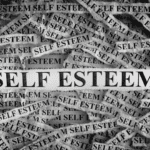Wellness meaning goes beyond just physical health; it encompasses a balanced state of mind, body, and spirit. Nowadays, with everything moving so quickly, wellness has become super important in our day-to-day lives. It’s bigger than just keeping fit, eating right, or working out; it’s about the whole package—keeping your mind, feelings, and spirit in check. Instead of just fixing sickness, this wellness trend is about getting in front of it and reaching for top-tier health. But what does wellness mean to you? It’s a question worth pondering as we dive into the eight dimensions of wellness and explore the various aspects of health that contribute to our overall well-being.
We’re exploring wellness, peeking back at its origins, all its components, and how it’s not the same as just feeling okay. We’ll also discuss ways to incorporate wellness into your life at home, on the job, and around your neighborhood, focusing on healthy ways to boost your quality of life.
Table of Contents

What’s Wellness All About?
Digging Into the Past
Wellness isn’t a new idea. It started with old-time societies in India and China. They had stuff like Ayurveda and Traditional Chinese Medicine that stressed keeping a good balance—your body, your thoughts, and your inner self all aligned. Those ancient Greek and Roman folks were all about the whole health deal, too. They were big on mixing up being fit with being good and wise, laying the groundwork for what we now recognize as the dimensions of health.
Fast-forward to the 1800s and 1900s, when Europe and the U.S. started adopting this “taking care of yourself before you get sick” philosophy. Then, in the middle of the last century, a man named Halbert L. Dunn came along. He said wellness is constantly hustling to better yourself, which aligns with our modern understanding of personal growth and holistic wellness.
Modern Definitions
The Global Wellness Institute describes wellness as “the active chase of stuff you do, options you make, and ways you live that bring you to a whole healthy life.” It’s not just some state where you’re done; it’s a thing that changes, and you’ve got to keep at it. Wellness, meaning health, encompasses a broad spectrum of components, including how your body feels, emotions, brain power, hanging with others, spirit, and even your surroundings.
Digging into how folks thought about wellness back in the day and how they feel about it now helps people grab onto habits that make their lives rock. It’s all about understanding the types of well-being and how they contribute to our overall health.

Talking About Wellness and Its Pieces
How many dimensions of wellness are there? While some models vary, let’s explore the eight pillars of wellness that are commonly recognized:
Doing Good Physically
Keeping your body in tip-top shape is what physical wellness is about. You gotta eat right, move your body, get some good zzz’s, and steer clear of bad stuff. Here’s what it covers:
- Getting your muscles moving regularly through exercise
- Eating stuff that’s good for you (nutrition)
- Sleeping enough
- Dodging diseases and getting health screenings
Feeling Good Inside
Emotional wellness is all about managing your feelings, growing tough, and getting to know yourself better. So it’s about:
- Figuring out how to deal with feelings in a good way
- Handling rough times and stress management
- Being kind to yourself and developing self-awareness
- Asking for professional advice if you gotta
Intellectual Wellness
You never stop learning with intellectual wellness; it keeps your brain buzzing. The intellectual dimension of wellness encourages you to:
- Do stuff that’s creative and makes you think
- Learn new things and get better at what you know
- Think and solve problems
- Take on tough, brainy stuff
Social Wellness
Having good friends and strong social ties, that’s social wellness for you. The social dimension of wellness involves:
- Talking well with others and having great people skills
- Building relationships that matter and having people who have your back
- Getting involved in the community and helping out voluntarily
- Solving conflicts and setting clear personal limits
Spiritual Wellness
Spiritual wellness is about finding what matters in life. You don’t have to be religious, but it might include things like:
- Being mindful and meditative
- Making sure what you do lines up with your central beliefs and personal values
- Gaining inner calm and a moment to think
- Feeling a bond with the great outdoors or something bigger
Environmental Wellness
Environmental wellness is all about keeping the environment healthy and going strong. You do stuff like:
- Cutting down on trash and reusing stuff
- Saving energy and not wasting what the Earth gives us
- Backing ways to keep the Earth in good shape through environmental sustainability
- Make sure you live in a spot that’s safe and doesn’t have any dirt or junk
Financial Wellness
Financial wellness includes a person’s ability to manage money wisely to chill out on the stress and ensure you’re set for the future. It’s got:
- Making budgets and keeping tabs on what you spend
- Cutting down debt and stashing cash away
- Coming up with financial planning strategies and growing your money
- Spending what you can afford
Occupational Wellness
The occupational dimension of wellness focuses on finding satisfaction and enrichment in our work. It involves:
- Pursuing career satisfaction and personal development
- Balancing work and personal life effectively
- Utilizing your skills and talents in a meaningful way
- Contributing to your workplace and society through your profession

The Wellness Continuum
The Spectrum from Sickness to Health
In ’75, John Travis rolled out the Spectrum from Sickness to Health, painting a picture of health on a scale. It has sickness and not being able to do stuff on one side and super healthy on the flip side. The big aim is to develop healthy habits that push you toward super health instead of just dodging getting sick.
Salutogenic vs. Pathogenic Approaches
Aaron Antonovsky designed the salutogenic model. This model looks at what keeps people healthy instead of what makes them sick. It emphasizes things like bouncing back, having solid friendships, and enjoying life. It’s not like the old-school pathogenic model, which is all about wiping out illnesses. Salutogenesis is all about staying healthy on purpose and feeling in charge of your own body.
Let’s talk about the difference between wellness and well-being, alright?
Some Main Things That Set Them Apart
So, wellness and well-being are kinda like cousins, but they ain’t the same:
- Wellness is when you make choices to live healthy.
- Well-being is the bigger picture. It’s about being happy, feeling satisfied with life, and overall killing it in quality of life.
Five Elements of Well-being (According to Gallup)
- Career Well-being – Finding joy in work and feeling satisfied.
- Social Well-being – Creating solid supportive bonds with others.
- Financial Well-being – Handling money matters to cut down on stress.
- Physical Well-being – Keeping up with good health and staying energized.
- Community Well-being – Being involved and connected in your local area.
What This Means for Life and Rule-Making
Grasping these distinctions is key when individuals and groups aim to develop holistic plans for better health. Businesses can roll out detailed well-being programs that focus on emotional wellness, money management, and bringing people together through social connections.

Forging Good Routines for Better Health
Getting to Grips with Self-Control
Self-regulation means controlling your feelings, actions, and thoughts to reach significant goals. You gotta:
- Get into mindfulness and knowing yourself.
- Make goals you can reach.
- Handle stress and stuff that sets off your emotions.
Getting into Good Habits
- Kick Off with Baby Steps – Start with tiny tweaks and stick with ’em.
- Tie New Habits to Your Routine – Add new stuff to your daily work.
- Get Ready to Win – Consider the rough spots ahead and determine how to beat them.
- Keep an Eye on Your Growth – Write stuff down or use an app to keep you pumped.
- Chill with the Right Crowd – Hang around with folks who cheer you on.
- Stick to It, Keep Going – Making habits stick is all about time and doing stuff.

Staying Healthy in All Parts of Your Life
Looking After Yourself
Caring for your health is about blending different parts, focusing on balance, and looking after yourself. You’ve gotta:
- Eat healthy and move your body
- Get into self-improvement and soak up new knowledge
- Forge strong bonds with others
- Do mind-calming exercises and chill-out practices
Health at Work
Health programs at work make employees feel better and work better, too. Top-notch programs have got stuff like:
- Check-ups and gym stuff
- Support for your headspace and people to talk to
- Rules that let you juggle work-life balance
- Classes to help handle pressure and develop coping skills

Wellness in the Neighborhood
Keeping the community healthy means everyone gets a boost. Things people might do include:
- Fun in parks and joining in on community games
- Getting to doctors and healthy eating plans
- Keeping our planet clean and green through community engagement
- Making friends and helping out

Conclusion: Wellness Meaning and Implementation
Wellness isn’t just about not being sick. It has a deep history, fancy definitions, and lots of important parts. If we know about these bits and pieces, we can get better at being well. Whether it’s what we do alone, what our jobs help us with, or how we hang out with others, thinking wellness first makes life extraordinary.
By being mindful, sticking to good habits, and chilling in great places, folks can get wellness into every corner of their lives. That means being super healthy and super happy for ages. Which dimension of health is most substantial for you? Reflecting on this can help you focus on areas you might need to improve, leading to a more balanced and fulfilling life.
Remember, the aspect of health that involves interacting and getting along with others positively is just as crucial as taking care of your body. By nurturing all dimensions of wellness, you’re setting yourself up for a life of vitality, purpose, and satisfaction.










